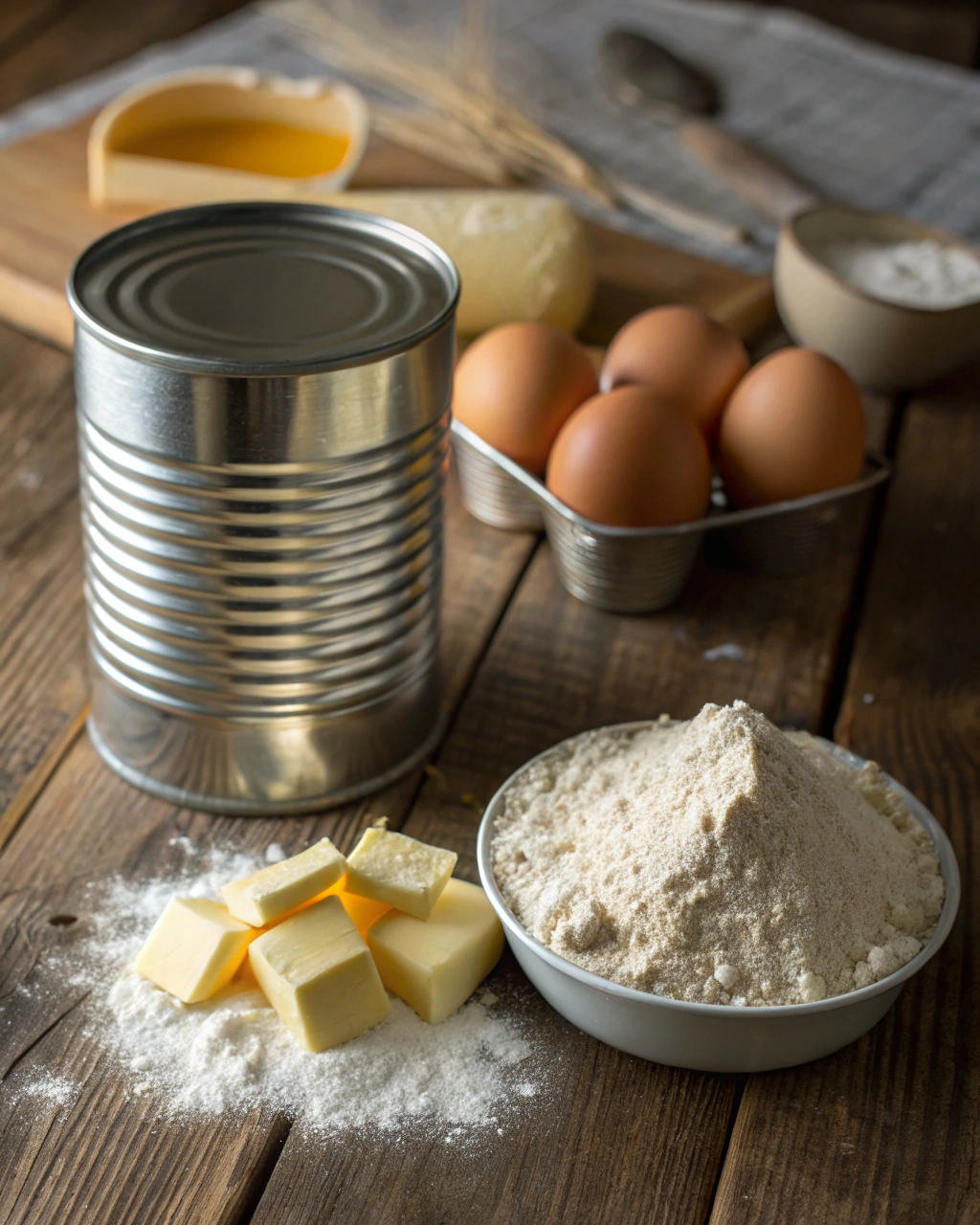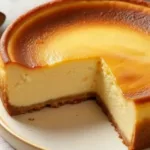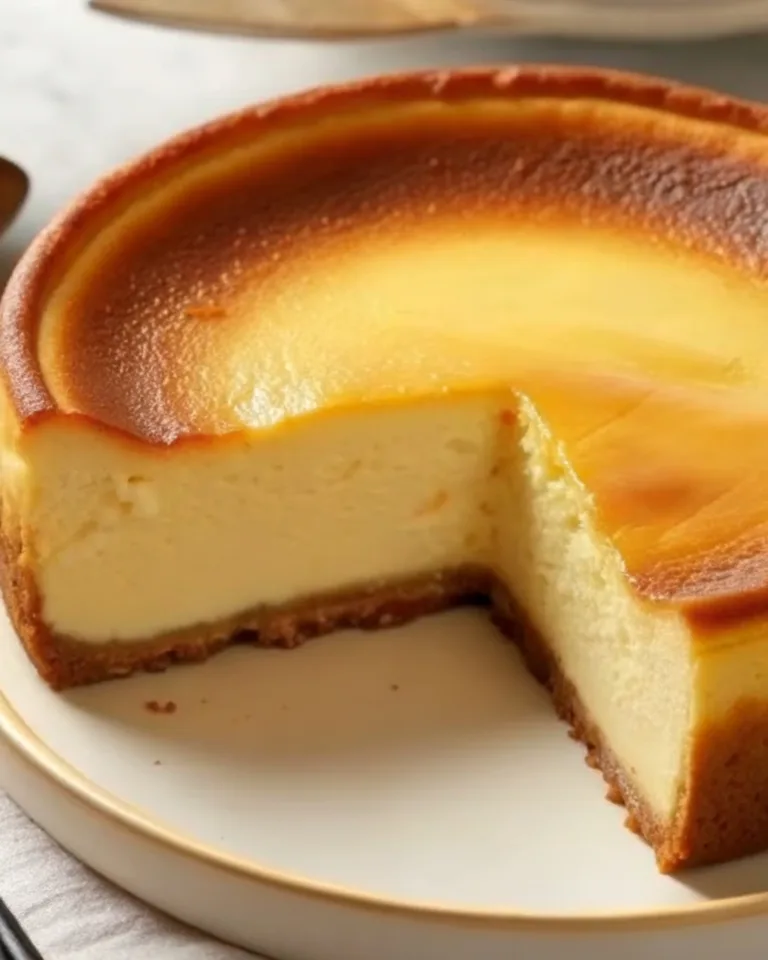The scent of vanilla and caramelized sweetness wafting through my grandmother’s kitchen transports me back to Sunday afternoons when she would unveil her famous condensed milk cake. Those golden, moist slices became the centerpiece of family gatherings, their buttery richness bringing everyone to the table with anticipation.
Did you know that condensed milk cake recipes have seen a 78% surge in online searches over the past two years? This enduring classic has captivated bakers worldwide with its simplicity and velvety texture. The condensed milk cake combines the convenience of pantry staples with an unmatched tender crumb that keeps enthusiasts coming back for “just one more slice.”
Why Condensed Milk Cake Deserves a Spot in Your Recipe Collection
Condensed milk cake stands apart in the world of sweet treats because of its unique texture and foolproof preparation. Unlike many desserts requiring complex techniques, this cake welcomes bakers of all skill levels while delivering professional-quality results. For deeper insights into working with this versatile ingredient, check out Mastering Sweetened Condensed Milk Baking which explores various applications. If you’re looking to perfect your technique, the Essential Baking Tools Guide provides equipment recommendations. For comparison with other classic recipes, review the Classic Vanilla Butter Cake or the delightful Heaven on Earth Cake for inspiration on flavor combinations.
Condensed Milk Cake Ingredients
Condensed Milk Cake Ingredients
- 1 can (14 oz) sweetened condensed milk
- 4 large eggs, at room temperature
- ½ cup (1 stick) unsalted butter, melted and cooled
- 1 ½ cups all-purpose flour
- 1 tablespoon baking powder
- 1 teaspoon vanilla extract
- Pinch of salt
- Optional: zest of 1 lemon or orange
Substitution options:
- Replace all-purpose flour with cake flour for an even softer texture
- Substitute butter with neutral oil for a dairy-free version
- Use gluten-free flour blend (plus ½ teaspoon xanthan gum) for gluten sensitivities
- Add almond extract instead of vanilla for a nutty twist
- Incorporate 2 tablespoons of poppy seeds for added texture and visual appeal
Ingredient Spotlight
Sweetened Condensed Milk: The star ingredient provides not just sweetness but creates that distinctive melt-in-your-mouth texture. The condensed milk’s high sugar content contributes to the cake’s beautiful caramelization and extended shelf life.
Room Temperature Eggs: This crucial detail ensures proper emulsification, resulting in a lighter, more even crumb structure. Cold eggs can cause the batter to curdle or prevent optimal rise.
Melted Butter: Unlike creamed butter methods, using melted butter creates a denser, more pound cake-like texture while maintaining incredible moisture. The fat also carries flavors more efficiently throughout the batter.
Baking Powder: The generous tablespoon might seem excessive, but it’s essential for lifting this dense batter. The condensed milk creates a heavy mixture that needs significant leavening power.
Timing Your Condensed Milk Cake
Preparation time: 15 minutes
Baking time: 40-45 minutes
Cooling time: 30 minutes
Total time: 90 minutes
This condensed milk cake comes together about 30% faster than traditional butter cakes that require creaming methods. The melted butter and condensed milk streamline the process, eliminating steps like gradual sugar incorporation or alternating dry and wet ingredients.
Creating Your Condensed Milk Cake
Preparing Your Kitchen
Begin by positioning your oven rack in the center position and preheating to 350°F (175°C). This moderate temperature allows for even baking without over-browning the exterior before the center sets. While waiting, lightly grease and line an 8-inch round cake pan with parchment paper, allowing some overhang for easy removal later.
Chef’s Tip: A light dusting of flour after greasing creates an additional non-stick insurance policy, especially valuable for this sugar-rich cake that tends to caramelize along the edges.
Mixing Wet Ingredients
In a large bowl, whisk together the condensed milk and eggs until completely smooth and slightly lighter in color, about 2 minutes. The mixture should feel silky and have a pale yellow appearance.
Chef’s Tip: Don’t rush this step! Proper aeration here contributes significantly to the cake’s texture. Look for the mixture to leave a “ribbon” that slowly disappears when drizzled back onto itself.
Incorporating the Butter
Slowly pour in the cooled melted butter while whisking continuously. The butter must be cool enough not to cook the eggs but warm enough to remain liquid.
Chef’s Tip: If your butter has begun to solidify again, warm it gently just until fluid. Too hot, and you’ll compromise the eggs; too cool, and you’ll get butter flecks throughout the batter.
Adding Dry Ingredients
Sift the flour, baking powder, and salt together in a separate bowl. Gently fold these dry ingredients into your wet mixture using a spatula, making deliberate cuts through the center and folding over the sides. Add the vanilla extract and any optional zest during this process.
Chef’s Tip: Stop mixing the moment the dry streaks disappear. Overmixing develops gluten, which can make your cake tough rather than tender.
Baking to Perfection
Pour the batter into your prepared pan, smoothing the top with a spatula. Tap the pan gently on the counter to release any trapped air bubbles.
Chef’s Tip: Create a slight “well” in the center of your batter by pushing more toward the edges. Since cakes rise more in the middle, this technique helps achieve a flatter top.
Cooling and Serving
Bake for 40-45 minutes, or until a toothpick inserted into the center comes out clean or with a few moist crumbs. The top should be golden brown and spring back when lightly pressed.
Chef’s Tip: Resist opening the oven during the first 30 minutes of baking, as temperature fluctuations can cause the cake to sink in the center.
Tips & Tricks for Perfect Condensed Milk Cake
Room temperature ingredients matter – Cold eggs can cause the melted butter to solidify, creating a lumpy, uneven batter.
Don’t substitute evaporated milk – Despite similar packaging, evaporated milk lacks the sugar content necessary for proper texture and caramelization.
Measure flour correctly – Spoon flour into measuring cups and level with a knife rather than scooping directly from the container, which compacts flour and results in using too much.
Allow proper cooling time – This cake’s structure continues to set as it cools; cutting too early can result in a gummy texture.
Cover the cake with foil if it’s browning too quickly but still needs time to bake through completely.
Condensed Milk Cake Variations & Substitutions
Tropical Coconut Version
Reduce flour to 1¼ cups and add ½ cup desiccated coconut. Replace vanilla with coconut extract and sprinkle toasted coconut flakes on top before baking.
Citrus Infusion
Add the zest and juice of one lemon or orange, reducing butter by 1 tablespoon to account for the extra liquid. A simple glaze made from citrus juice and powdered sugar elevates this variation.
Chocolate Marble
Separate out ⅓ of the batter and mix in 2 tablespoons of cocoa powder. Drop spoonfuls of chocolate batter into the vanilla batter and swirl gently with a knife for a marbled effect.
Coffee Cinnamon Spice
Add 1 tablespoon of instant espresso powder dissolved in 1 tablespoon hot water and 1 teaspoon ground cinnamon to the batter for a warm, aromatic variation.
Behind the Recipe
The condensed milk cake emerged from resourceful baking during times when fresh milk was scarce or unreliable. This humble cake first gained popularity in Latin America, particularly in Brazil where it’s known as “bolo de leite condensado,” before spreading globally. The recipe represents the beautiful intersection of necessity and culinary ingenuity—proving that sometimes, limitations create the most extraordinary culinary traditions.
In my own kitchen, this recipe came via my grandmother’s handwritten recipe book, stained with butter spots and marked with notes from decades of baking. Each time I prepare it, I’m continuing a lineage of home bakers who found magic in simplicity.
Pairing Ideas
- Serve with fresh berries macerated with a touch of sugar and lemon juice
- Accompany with a dusting of powdered sugar and a side of vanilla bean custard
- Offer alongside a scoop of quality vanilla ice cream
- Present with a warm berry compote that contrasts beautifully with the cake’s richness
- Complement with whipped cream infused with a hint of citrus zest
- Serve with hot tea or freshly brewed coffee to balance the sweetness
Leftover & Reuse Ideas
Transform day-old condensed milk cake into:
- Decadent French toast by soaking slices in an egg mixture and pan-frying
- Elegant trifle layers interspersed with cream and fruit
- Cake pops by crumbling, mixing with a touch of frosting, and forming into balls
- Bread pudding substitute—cube the cake and soak in a light custard before baking
- Ice cream mix-ins by crumbling and folding into softened vanilla ice cream
Nutritional Information
Per serving (1/10 of cake):
- Calories: Approximately 290
- Carbohydrates: 38g
- Protein: 5g
- Fat: 14g
- Saturated Fat: 8g
- Sodium: 160mg
- Fiber: <1g
- Sugar: 25g
Serving Suggestions for Condensed Milk Cake
Present your condensed milk cake with thoughtful accompaniments that elevate the experience:
- Cut into precise squares and dust with powdered sugar through a small sieve for an elegant presentation
- Create a pattern on top using a doily as a stencil for powdered sugar
- Arrange slices on vintage plates with edible flowers for special occasions
- For dessert tables, offer both plain slices and “dressed” versions with various toppings
- Create height on your serving platter by placing the cake on a cake stand surrounded by fresh seasonal fruit
Common Mistakes to Avoid When Making Condensed Milk Cake
Using cold ingredients – Results in uneven mixing and potential butter solidification. Solution: Set eggs and condensed milk at room temperature for 30 minutes before starting.
Opening the oven repeatedly – Causes temperature fluctuations and potential collapse. Solution: Use the oven light to check progress instead of opening the door.
Underbaking – Results in a gummy, dense center. Solution: Know your oven’s peculiarities and check with a toothpick; it should come out with a few moist crumbs, not wet batter.
Overmixing the batter – Creates a tough, less tender cake. Solution: Mix just until ingredients are incorporated, using gentle folding motions.
Incorrect pan size – Using a pan too large spreads the batter thin, causing overbaking; too small and it may overflow. Solution: Stick with the recommended 8-inch round pan or adjust baking time accordingly.
Storage & Reheating Tips for Condensed Milk Cake
Counter Storage: This cake keeps beautifully at room temperature. Store in an airtight container or wrapped in plastic wrap for up to 3 days.
Refrigeration: Extend shelf life to 1 week by refrigerating. Bring slices to room temperature before serving to restore their soft texture.
Freezing: Wrap individual slices in plastic wrap, then foil, and freeze for up to 3 months. Thaw overnight in the refrigerator or at room temperature for 2-3 hours.
Reheating: To restore that fresh-baked quality, warm refrigerated slices in a 300°F oven for 5-7 minutes or microwave for 15-20 seconds.
Condensed Milk Cake FAQs
Can I make condensed milk cake ahead of time?
Yes! This cake actually improves with a day of rest as the flavors meld and develop. Make it up to 2 days ahead and store in an airtight container at room temperature.
Why did my condensed milk cake sink in the middle?
Sinking typically occurs from underbaking, opening the oven door too early, or overmixing the batter. Ensure your oven is properly calibrated and avoid disturbing the cake during the first 30 minutes of baking.
Can I make condensed milk cake without eggs?
While the traditional recipe relies on eggs for structure, you can experiment with substitutes like a flax egg (1 tablespoon ground flaxseed + 3 tablespoons water) per egg, though the texture will differ somewhat.
How do I know when my condensed milk cake is done baking?
A properly baked condensed milk cake should be golden brown with a firm top that springs back when lightly touched. A toothpick inserted into the center should come out clean or with a few moist crumbs, but no wet batter.
Is condensed milk cake the same as tres leches cake?
No, though they share similarities. Condensed milk cake incorporates the sweetened condensed milk into the batter itself, while tres leches is a sponge cake soaked in three types of milk (including condensed milk) after baking.
In Conclusion
The beauty of condensed milk cake lies in its wonderful contradiction—an extraordinarily special result from remarkably simple ingredients. This versatile canvas welcomes your personal touch, whether through aromatic additions, textural elements, or creative serving ideas. The cake’s moist, tender crumb and caramelized notes make it both a reliable standby and a worthy centerpiece for celebrations.
Made these condensed milk cake? Drop your twist in the comments, rate the recipe, and tag us on facebook, instagram with #erinrecipes — we might feature your creation!
Print
How to Make Condensed Milk Cake in 6 Easy Steps
- Total Time: 90 minutes
- Yield: 10 slices 1x
- Diet: Vegetarian
Description
Condensed Milk Cake delivers rich, buttery flavor with a moist, tender crumb thanks to sweetened condensed milk, making it an irresistible and simple dessert perfect for any occasion.
Ingredients
- 1 can (14 oz) sweetened condensed milk
- 4 large eggs, at room temperature
- ½ cup unsalted butter, melted and cooled
- 1 ½ cups all-purpose flour
- 1 tablespoon baking powder
- 1 teaspoon vanilla extract
- Pinch of salt
- Optional: zest of 1 lemon or orange
Instructions
- Preheat oven to 350°F (175°C). Grease and line an 8-inch round cake pan with parchment paper.
- In a large bowl, whisk together sweetened condensed milk and eggs until smooth and slightly lightened in color, about 2 minutes.
- Slowly pour in the cooled melted butter while whisking continuously until fully incorporated.
- In a separate bowl, sift together flour, baking powder, and salt.
- Gently fold dry ingredients into the wet ingredients until just combined. Add vanilla extract and optional zest if using.
- Pour the batter into the prepared pan and smooth the top. Tap gently to remove air bubbles.
- Bake for 40-45 minutes, or until a toothpick inserted into the center comes out clean or with a few moist crumbs.
- Let cool in the pan for 15 minutes, then transfer to a wire rack to cool completely before slicing and serving.
Notes
For a tropical twist, add ½ cup desiccated coconut to the batter and replace vanilla with coconut extract. Store cake in an airtight container at room temperature for up to 3 days or refrigerate for longer freshness.
- Prep Time: 15 minutes
- Cook Time: 45 minutes
- Category: Dessert
- Method: Baking
- Cuisine: International
Nutrition
- Serving Size: 1 slice
- Calories: 290
- Sugar: 25g
- Sodium: 160mg
- Fat: 14g
- Saturated Fat: 8g
- Unsaturated Fat: 5g
- Trans Fat: 0g
- Carbohydrates: 38g
- Fiber: 0g
- Protein: 5g
- Cholesterol: 115mg
Keywords: condensed milk cake, easy condensed milk cake, moist condensed milk cake, sweetened condensed milk cake, simple condensed milk cake

